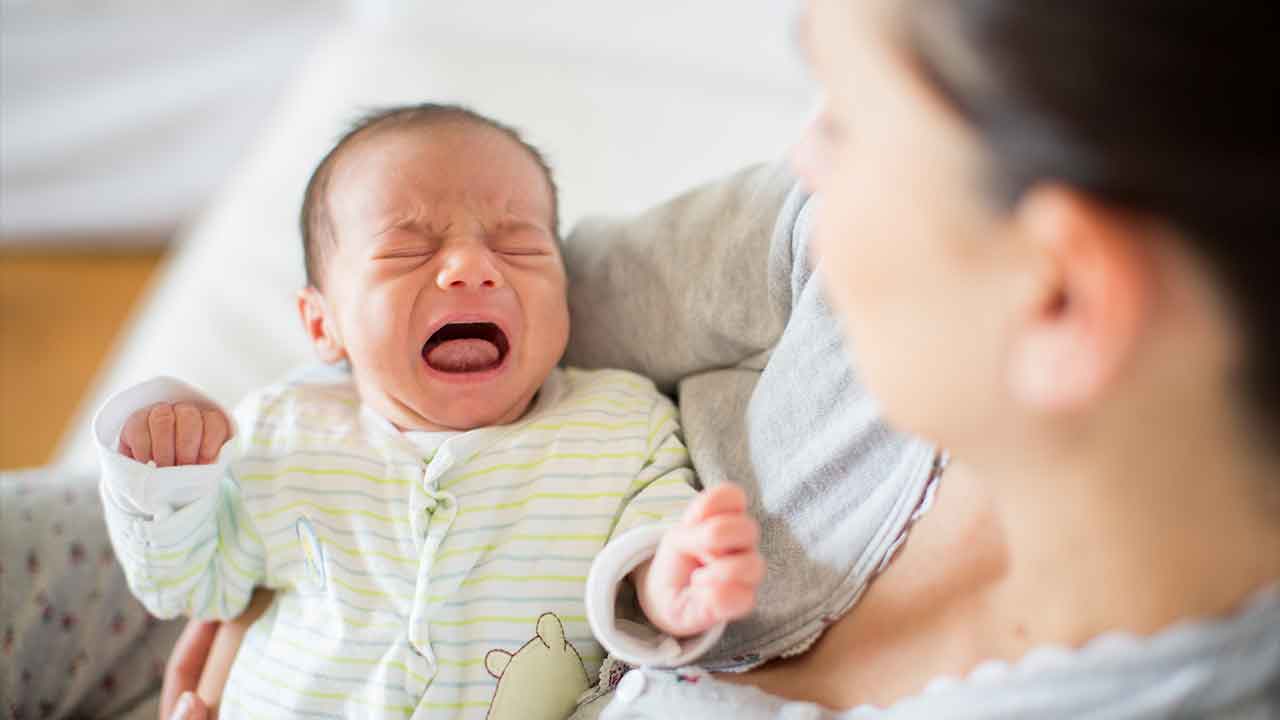Here’s the best way to soothe a crying baby, according to science

A crying baby who can’t get to sleep can be a frustrating and frequent occurrence for parents and caregivers - but here’s the best way to go about calming them down, according to science.
A team of scientists tested multiple methods for soothing a baby to help them sleep and found a winner: holding and walking with them for five minutes.
Kumi Kuroda and her colleagues at the RIKEN Center for Brain Science in Japan have been studying the transport response, an innate reaction seen in animals with young that are immature and can’t look after themselves, including mice, dogs, monkeys and humans.
After observing that when animals picked up their young and walked with them, the infants become more docile and their heart rates slow down, Kuroda and her team wanted to compare the effect of this transport response against other motions, such as rocking or holding.
The team then compared four methods of soothing 21 infants: being held as their mothers walked, being held by their sitting mother, lying in a still crib, or lying in a rocking cot.
They found that when babies were being carried by mothers who were walking, their heart rates slowed within 30 seconds, with a similar effect seen when infants were in rocking cots.
Surprisingly, the effect wasn’t seen among babies who were in a still cot or held by mothers who were sitting down, suggesting that holding a baby isn’t enough to soothe them.
They found that the effect was even more apparent when babies were held and walked with for at least five minutes.

Kumi Kuroda and her team at the RIKEN Brain Center have proposed a new method for soothing crying infants and helping them fall (and stay) asleep. Image: Current Biology Ohmura et al (Supplied)
All of the babies in the study stopped crying, with nearly all falling asleep. But, more than a third became alert again within 20 seconds of being put to bed and every baby showed changes in heart rate when they were detached from their mums.
Interestingly, the team found that babies that were asleep for a longer period before being laid down were less likely to wake up during the process of being put to bed.
Kuroda, herself a mother of four, said she was surprised by the results.
“I thought baby awoke during a laydown is related to how they’re put on the bed, such as their posture, or the gentleness of the movement,” Kuroda says.
“But our experiment did not support these general assumptions.”
As a result of their study, the team has proposed a method of soothing a baby to help promote sleep and stop them from crying.
After holding and walking your crying infant for five minutes, the team recommends sitting and holding them for another five to eight minutes before putting them to bed.
Though it goes against common approaches such as waiting for a baby to cry until they fall asleep by themselves, the team’s new method aims to be an immediate solution for a crying infant.
The team also note that their new method would also need to be investigated further to determine whether it had any long-term improvements for infants and their sleep.
“Many parents suffer from babies’ nighttime crying,” Kuroda adds.
“That’s such a big issue, especially for inexperienced parents, that can lead to parental stress and even to infant maltreatment in a small number of cases.
“For many, we intuitively parent and listen to other people’s advice on parenting without testing the methods with rigorous science. But we need science to understand a baby’s behaviours, because they’re much more complex and diverse than we thought.”
Their findings were publishing in the journal Current Biology.
Image: Getty Images
